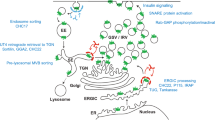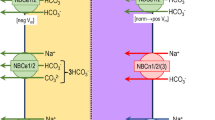Abstract
The usual first step in the intracellular metabolism of exogenous selenite is its chemical reaction with glutathione to form selenodiglutathione (1). We have investigated whether selenite also reacts intracellularly with other SH compounds. HeLa cells were exposed to [75Se]selenite and lysed with SDS. Cellular proteins and nucleic acids were precipitated with trichloroacetic acid, and the acid-soluble fraction was analyzed by ion-exchange thin-layer chromatography (ion-exchange TLC) and autoradiography. In control cells, the major [75Se]-containing species detected can be identified by its mobility as selenodiglutathione. Two other species were detected, which can be identified as selenodimercaptoethylamine and the mixed selenotrisulfide of mercaptoethylamine and glutathione. In contrast, in cells that were depleted of glutathione (by treatment with buthionine sulfoximine), very little, if any, selenodiglutathione was detected. However, new [75Se]-containing species were detected, which can be identified as selenodicysteine and the mixed selenotrisulfide of cysteine and glutathione. The same species were detected when [75Se]selenite was added to the acid-soluble fraction of a cell extract (as opposed to living cells), confirming that these compounds can be formed by nonenzymatic reactions.
Similar content being viewed by others
References
H. E. GantherJ. Am. Coll. Toxicol. 5, 1–5 (1986).
G. D. Combs and S. B. Combs,The Role of Selenium in Nutrition, Academic, Orlando, FL, 1986.
R. A. Sunde and J. K. EvensonJ. Biol. Chem. 262, 933–937 (1987).
H. E. GantherBiochemistry 7, 2898–2905 (1968).
J. Hogberg and A. KristofersonFEBS Lett. 107, 77–80 (1979).
R. F. Whiting, L. Wei, and H. F. StichMutat. Res. 78, 159–169 (1980).
J. D. Young, C. Crowley, and E. M. Tucker,Biochem. Pharmacol. 30, 2527–2530 (1981).
L. N. Vernie, C. J. Homburg, and W. S. Bont,Cancer Lett. 14, 303–308 (1981).
K. A. Poirier, and J. A. Milner,J Nutr. 113, 2147–2154 (1983).
L. N. Vernie, M. De Vries, L. Karreman, R. J. Topp, and W. S. Bont,Biochim. Biophys. Acta 739, 1–7 (1983).
G. Batist, A. Katki, G. R. W. Klecker, and C. E. Myers,Cancer Res.,46, 5482–5485 (1986).
R. D. Snyder,Cancer Lett. 34, 73–81 (1987).
M. E. Fico, K. A. Poirier, A. M. Watrach, M. A. Watrach, and J. A. Milner,Cancer Res. 46, 3384–3388 (1986).
G. D. Frenkel, A. Walcott, and C. Middleton,Mol. Pharmacol. 31, 112–116 (1987).
G. D. Frenkel, and D. Falvey,Mol. Pharmacol. 34, 573–577 (1988).
G. D. Frenkel, and D. FalveyBiochem. Pharmacol. 38, 2849–2852 (1989).
P. B. Caffrey and G. D. Frenkel,Mol. Pharmacol. in press
P. C. Jocelyn,Biochemistry of the SH Group, Academic, London, 1972.
O. W. Griffith, and A. Meister,J. Biol. Chem. 254, 7558–7560 (1979).
D. G. Morrison, and D. Medina,Chem. Biol. Interact. 71, 177–186 (1989).
A. Stahl, I. Anundi, and J. Hogberg,Biochem. Pharmacol. 33, 1111–1117 (1984).
Author information
Authors and Affiliations
Rights and permissions
About this article
Cite this article
Frenkel, G.D., Falvey, D. & MacVicar, C. Products of the reaction of selenite with intracellular sulfhydryl compounds. Biol Trace Elem Res 30, 9–18 (1991). https://doi.org/10.1007/BF02990338
Received:
Accepted:
Issue Date:
DOI: https://doi.org/10.1007/BF02990338




